#Philosophy of Information
Text
Exploring the Philosophical Landscape of Technology: Theories and Perspectives
The philosophy of technology is a rich and evolving field that explores the nature, impact, and ethical dimensions of technology. Here are some key theories and approaches within this field:
Technological Determinism: This theory suggests that technology shapes society and human behavior more than individuals or society shape technology. It proposes that technological developments have a predetermined, often inevitable, impact on social, cultural, and economic structures.
Social Construction of Technology (SCOT): SCOT theory argues that technologies are not inherently good or bad but are socially constructed. It focuses on the process by which technologies are developed, adopted, and adapted based on the values and interests of different social groups.
Postphenomenology: Drawing from phenomenology, this approach explores how technology mediates our interactions with the world. It examines the ways in which technology influences our perception, embodiment, and experiences.
Actor-Network Theory (ANT): ANT considers both human and non-human actors (like technology) as equal participants in shaping social networks and processes. It emphasizes the role of technology in mediating human interactions and agency.
Ethics of Technology: This area of philosophy explores the ethical dimensions of technological development and use. It delves into topics such as privacy, surveillance, artificial intelligence ethics, and the moral responsibilities of technologists.
Philosophy of Information: This branch investigates the fundamental nature of information and its role in technology. It examines concepts like data, knowledge, and information ethics in the digital age.
Critical Theory of Technology: Rooted in critical theory, this approach critiques the social and political implications of technology. It seeks to uncover power structures and inequalities embedded in technological systems.
Feminist Philosophy of Technology: This perspective focuses on the intersection of gender and technology. It examines how technology can reinforce or challenge gender norms and inequalities.
Environmental Philosophy of Technology: This theory explores the environmental impact of technology, including topics like sustainability, resource depletion, and the ethics of technological solutions to environmental challenges.
Existentialist Philosophy of Technology: Drawing from existentialism, this approach considers the impact of technology on human existence and individuality. It explores questions of alienation, authenticity, and freedom in a technological world.
Human Enhancement Ethics: With the advancement of biotechnology, this theory addresses the ethical dilemmas surrounding human enhancement technologies, including genetic engineering and cognitive enhancement.
Pragmatism and Technology: Pragmatist philosophy examines how technology influences our practical, everyday experiences and shapes our interactions with the world.
These theories and approaches within the philosophy of technology provide valuable insights into how technology influences and is influenced by society, as well as the ethical considerations that arise in our increasingly technologically driven world.
#philosophy#ontology#epistemology#metaphysics#knowledge#learning#education#chatgpt#ethics#Philosophy of Technology#Technological Determinism#SCOT#Postphenomenology#Actor-Network Theory#Ethics of Technology#Philosophy of Information#Critical Theory of Technology#Feminist Philosophy of Technology#Environmental Philosophy of Technology#Existentialist Philosophy of Technology#Human Enhancement Ethics#Pragmatism and Technology
1 note
·
View note
Quote
All the resources of our almost miraculous technology have been thrown into the current assault against silence. That most popular and influential of all recent inventions, the radio, is nothing but a conduit through which pre-fabricated din can flow into our homes. And this din goes far deeper, of course, than the ear-drums. It penetrates the mind, filling it with a babel of distractions — news items, mutually irrelevant bits of information, blasts of corybantic or sentimental music, continually repeated doses of drama that bring no catharsis, but merely create a craving for daily or even hourly emotional enemas.
Aldous Huxley, The Perennial Philosophy
#technology#machines#media#sound#silence#information#distractions#quotes#Huxley#Aldous Huxley#The Perennial Philosophy
159 notes
·
View notes
Text
True knowledge exists in knowing you know nothing || Dr. Ratio & Socrates
Okay, I legitimately laughed out loud writing that title, but listen. LISTEN.
Ratio's inspirations derive from many sources; from referencing Archimedes's brain-blast in the tub, to being doomed to have his head bonked by Newton's apple ad infinitum in his idle animation, to his ultimate line ('esse est percipi' / 'to be is to be perceived') a direct quote from Berkeley on Idealism - it's apparent that his design nods towards scholars across time periods rather than being a direct parallel to a singular academic.
Nevertheless, just for fun, I've been rotating Ratio and ancient greek philosophers around in my head and have had a great time chewing over how parallels Socrates in particular. I am in no way saying that Hoyo even thought about Socrates while they were designing Ratio, but I thought I'd share my thoughts. I think there are some worthwhile parallels to be drawn that touch on all aspects of Ratio's own philosophy regarding ignorance, the value of knowledge, and his deep appreciation of life. So, let's get into it.
Ratio is interested in humanity and curing 'ill minds with knowledge', that 'to turn a blind eye to the folly of others is not an etiquette, but a wicked worldly practice.' Ignorance is a disease - this is a concept that can be viewed through a Socratic lens. Socrates believed that that virtue and knowledge were impossible to separate from one another, and that virtue could be developed through acquiring knowledge and insight. If knowledge is virtue, then ignorance is vice. In Socrates's mind, no one would rationally choose to do something bad. People might choose to do bad things, but this is rooted in their own perception of the world - as in, someone would only choose to do something bad (for the world, or for themselves) because they believed (erroneously) that it was the right or good thing to do. To Socrates, the cure to this was knowledge: 'There are two kinds of disease of the soul, vice and ignorance.' & 'What does most harm in the world is not sinfulness but ignorance'.
To Ratio, 'If ignorance is an ailment, it is the duty of the scholars to weed it out and heal the universe'. He views his own ignorance as 'filth' that must be cleansed through methods such as reading. He also views knowledge as a method for humans to overcome their problems - 'Another day has passed. If your problem still hasn't been solved, is it possible the problem is you?' & 'You look distressed. Is something troubling you? if so, you can figure it out for yourself.' These statements sound harsh, but they also clue us into Ratio's philosophy - that through self-examination and improvement, one can overcome one's ailments.
Socrates was also known for being a trouble-maker, he was abrupt and tactless and did not care for someone's social standing nor decorum. He was also known for using what is now called the Socratic method, asking a series of questions that ultimately seek to show contradictions in the beliefs of those who posed them, and to move systematically towards a hypothesis free from contradiction. Socrates rarely made assertions himself - after all, he had no wisdom of his own. But he could interrogate others in order to expose their own foibles, much to the embarrassment and annoyance of those around him. He was once described as a 'gnat' chewing on the 'lazy horse of Athens', causing it to wake up and spring to life due to his persistent gnawing and prodding. Ratio also employs the Socratic method - 'I'm asking questions' - and also adopts sophist tactics such as playing devil's advocate and taking opposing sides (with both himself as seen a story quest, and with others as we see with his texts urging us to take up a side so he might debate us). Through questioning and interrogation, upsetting what we consider social convention and norms, we can dispel contradictions and thereby come closer to some form of truth.
To add to this - as highlighted in the replies below - Ratio’s skill ‘intellectual midwifery’ is a reference to the Socratic method. The idea being that Socrates helped those around him give birth to the knowledge that was already within them, rather than treating his students minds as empty vessels for him to fill with his own answers. Again this is beautifully echoed in Ratio - he doesn’t want to tell you how to live your life, he wants you to work out for yourself what it is you need, thus empowering oneself through self-examination and questioning.
Socrates did not believe in writing anything down. He believed that face-to-face communication was a far more effective way of communicating knowledge - which means, unfortunately, what we know of Socrates is primarily derived from secondary sources. Much of what we know about him today comes from Plato's dialogues, and Plato was known for liberally exercising artistic license.
Although Ratio is not dead, I find it interesting that his character story is told exclusively through secondary sources. To quote - '…There are no less than eight documentaries detailing his legendary exploits, and over a dozen memoirs about him. However, despite the plethora of commentaries, none of them seems to provide a compelling perspective.' It's as though there are no surviving fragments penned by Ratio's hand and all we have to go on is through the lenses of other people. This challenges us, perhaps, to try to think about our own interpretation of Ratio since secondary sources cannot be taken as a wholly unbiased account - and once again employing the Socratic method and empowering the reader to come to their own interpretation.
While Socrates left no writing behind, he was interested in spreading knowledge. Socrates spent most of his life in Athens, a city that was, during his lifetime (~470-399 BC), a hotpot of scholars, wisemen and philosophers. Athena, the Greek god of wisdom, was named after the city - her symbol the owl that is also appropriately perched on Ratio’s shoulder. Also in Athens at this time where the sophists. The sophists were a class of intellectuals who were known to teach courses in various subjects - but often for a high fee, and generally centred around the idea that persuasion and the use of knowledge as a tool was more important than wisdom or truth itself. There's some debate about whether Socrates could be characterised as a sophist himself, but, crucially, he is characterised as refusing to take payment for his teachings. He was born a plebeian (perhaps you might describe it as a mundane background.) He was known to dress in rags and go barefoot, speaking to and (often antagonising) people from all walks of life, preferring the marketplace as a center of debate than palaces or courtrooms. I can't help but think of the sophists as similar to the genius society (or at least Ratio's depiction of them in contrast to himself), cooped up in ivory towers and gatekeeping knowledge to the most privileged. He doubts if Herta's talent is always helpful to others, he compares Screwllum to a 'monarch'. Then again, the sophists may in fact be a bit of a parallel to the Intelligentsia Guild - from Ratio, 'when someone is willing to listen to knowledge that is being disseminated and circulated, a price is created'.
Socrates (or at least the Platonic depiction of Socrates) was at one time declared the wisest man in Athens by the Oracle of Delphi. Socrates balks at this assertion - how can he possibly be the wisest man in Athens when he in fact knows nothing at all? This was not a claim made of modesty - he truly believed that he had no wisdom, that he was unsure what 'wisdom' itself even was. Ultimately, Socrates concludes that the only way that the Oracle could be correct is that by actually acknowledging that he knows nothing he paradoxically is the wisest man in Athens. All wisdom, therefore, is rooted in wondering, with wondering only possible if one is open to admitting one's own ignorance.
What I love about all of this in relation to Ratio is that Ratio styles himself as a mundanite. The Intelligensia Guild advocates that 'all knowledge must be circulated like currency' and accepts 'all beings… who seek to learn'. Ratio has no time for the satisfied self-styling of intellectualism, he himself states that 'to speak knowledge, we must first make people realise their own folly.' No one is above criticism in this regard, even himself - again, to quote 'Whenever someone agrees with me, I feel like I must be wrong.' Again, I feel as though he would resonate with Socrates here: 'Smart people learn from everything and everyone, average people from their experiences, and stupid people already have all the answers'. With Aventurine, he is quick to mock his appearance as over-the-top and vapid - once again making it clear his distate for vanity and hollow displays of showiness (albeit he may have been acting for Sunday's sake here. Also, no comment about this coming from a man who runs around in a toga, lmao)
Equally, with Aventurine, it is clear that Ratio is willing to learn from him - he apologises when he offends, he abhors his methodology and yet he still relies upon it and trusts in Aventurine's plan, he is drawn to him in some ways precisely because he is so different to himself. Aventurine (at least styles himself) as impulsive to Ratio's slow and steady methodology, Aventurine whose learning has been entirely self-made vs Ratio who has spent his life in classrooms, Ratio who scoffs at Aventurine's favourite games of chance yet adds slot machines to his simulated universe.
And to Socrates, the experience of aporia – in all of its discomfort and disruption – is the very catalyst of wonder, and that wonder was not just the root of wisdom but also the way to live a good and happy life. There is something beautiful in this to me, and this extends to Ratio. Ratio fundamentally cares about life. For all his brashness, his lashing out against 'idiots', his harsh demeanour - he wants people to live good lives, he wants to contribute to the good of humanity - all people, even those he is annoyed by, he cares so profoundly and absolutely about life. The entire reason why he is obsessed with wisdom and learning is not to exalt or elevate himself, not as some kind of ritualistic expression of piety towards a deity, but it is instead an expression of devotion towards life itself. Ratio has a strict work out routine not so that he can show off his body, but because living healthily is living well and working out is a component of that. Even the way he fusses and worries about Aventurine, someone he is pointedly irritated by, reveals how deeply his care runs. So so much of his character is centered on caring for life, even if it is not immediately obvious.
Finally, I'd like to highlight some ways in which Ratio is not like Socrates. First of all, Socrates was repeatedly described as 'ugly' by fellow philosophers Plato and Xenophon - this is contrast to Ratio being repeatedly described as 'handsome'. This is an interesting subversion to me (albeit likely an indulgent one) as in both cases both men attempt to distance their physical appearance from the weight of their words. Ratio wears the bust for many reasons, but way to view it is that he is attempting to stop his appearance from bearing any influence in the subject of debate.
Socrates was also said to be blessed by a divine touch, and as we know, this is something that agonises Ratio as Nous has not yet turned THEIR gaze towards him.
Lastly, Ratio has - thankfully - not yet been ordered by the state to drink hemlock for all his trouble-making and blustering. Though perhaps he may someday be put on trial by the IPC if the theories that he is working alongside Aventurine to undermine the corporation are true - we will just have to wait and see.
Thanks for reading my little ramble. I'd be super interested in anyone's thoughts if they'd like to share, but regardless, I'll leave off on some of my favourite wee quotes from the Rat man:
'Even a life marked by failure is a life worth living - it is only in moments of solitude and despair, when help is absent, that fools grasp how to pick themselves up.'
'Do stay alive. I wish you the best of luck.'
#dr ratio#ratio#aventurine#hsr#honkai star rail#my witterings#i love the rat man so much idk#much of the information i describe about Socrates comes from the podcast History of Philosophy without the Gaps#which I highly recommend if this is your kind of thing lol#but mostly I just wanted to have fun spinning my hyperfixation around lol#Also I make a few declarative statements throughout this but know that I do not claim to be a scholar of greek philosophy lol#please check the verasity for yourselves before relying on what I have to say#for I know nothing u see u see? :P#also I just wanna add in that I do NOT think Ratio is a perfect human being#ratio can be hypocritical and cruel and ignorant just like the rest of us#but I adore that too as afterall he is also an expression of humanity#with all its earthy faults
121 notes
·
View notes
Text
Ted Lasso: All right, guys, listen up. The things in the world originate only because of their relation to other things. That means they have no essence or existence of their own. Their true nature is that they are “śūnya" or "empty”.
Coach Beard: Emptiness isn’t their true nature, either.
Ted Lasso: Say what now?
Coach Beard: Emptiness isn’t truer than the false natures of the things that are empty.
Ted Lasso: Now how the hell does that work?
Coach Beard: Emptiness did not arise independently, either. Its existence is also dependent upon its relation to other things. If there was nothing to be empty, then there would be no emptiness.
Dani Rojas [excitedly, like a little kid with a new toy]: if all things are empty, then emptiness itself must be empty, too!
Ted Lasso: now that right there is what we call “insight beyond insight” back in Kansas
Higgins: Er, wouldn’t that make nirvana empty as well? And if it’s empty, doesn’t that mean there’s no reason to try to achieve it?
Jan Maas [unfiltered Dutchman]: Thoughts like those are why you’re still stuck in samsara.
#ted lasso#nagarjuna#buddhism#commit to the bit#original post#please don’t expect my satirical ted lasso post to give you complete and contextualized information#my educational nonfiction is thoroughly researched#but my bits are just bits#if anyone wants introductory level info about buddhist emptiness#watch the video on nagarjuna by let’s talk religion#you can find intermediate information on the stanford encyclopedia of philosophy#and the nichiren library entry on non-substantiality
932 notes
·
View notes
Note
hi there! love your work! i recently had a prof say that all zoos (USA) are bad (so we shouldn't support them) and sanctuaries are better because using animals for entertainment is morally wrong, most zoo profits dont go to conservation, and conservation efforts are bandaid solutions to capitalism destroying animal habitats, so the real solution is to return the land to indigenous stewards to manage/rewild. i didn't disagree with the last bit, but the argument as a whole felt a little off to me for a reason i couldnt put my finger on. am i off base here? just feeling really unsure about the whole thing.
You're not wrong! There's a mix of reality and personal opinions in those statements, and it's definitely something worth critically examining. A quick fact-check of what they said for you:
All US zoos are bad
There's a massive range of quality of zoological facilities within the US (and around the world). Some are stellar and some are not, and it's really just not accurate to lump them all under the same umbrella for almost any purpose. Unless, of course, your issue isn't with animal welfare, and it's philosophical, which is what it sound like in #2...
2. Using animals for entertainment is morally wrong.
This is one of my favorite things to talk about w/r/t how we exhibit animals. Entertainment has become equated with exploitation and implicit low welfare in the last couple decades, and so you get a lot of people saying using animals for entertainment is wrong. But those same folk will say that they enjoy seeing animals in other contexts, and they think that's okay. Where's the line between enjoying something and being entertained by it? What makes something one and not the other? Also, we know that people learn better from from situations which are enjoyable/entertaining - even just a fun teacher who jokes around vs a dry lecture - so how can that only be a problem when it's used to make viewing animals more impactful? I wrote a whole piece on this a while back (linked here) if you want to dig into this more. Some zoos (and accrediting groups) are shying away from "entertainment" type branding - shows are demos now, for instance - and others are leaning into "edutainment" that's done with good welfare and communicates actual education messaging. In short, this is a personal philosophical belief, and you're right to question if you agree. (Even if you decide you do think that too! It's always good to question why someone is arguing what they believe about animal use, and how they came to believe it).
3. Sanctuaries are better than zoos.
There's two reasons I think he's misinformed here. First, almost all exotic animal sanctuaries in the US are licensed exhibitors - just like zoos! I only know of a couple that don't exhibit to the public at all. It's an important part of their revenue stream, because gate take helps support paying for animal care. Also anything you see from a sanctuary on Youtube, Facebook, or TikTok? Also exhibition! They just message about it differently, and often have a different ethos about how they exhibit (e.g. tours to reduce stress instead of letting people wander, doing conservation or rescue messaging instead of just display). Second... look, most people assume that the word "sanctuary" means a facility is intrinsically more ethical than a zoo, and therefore they must be a good place. In reality, many sanctuaries get much less public and regulatory scrutiny (at the state level) than most zoos. There are good sanctuaries out there, but there are also sanctuaries where stuff goes on that would absolutely be unacceptable at zoos, and it slides because of the assumption that sanctuaries are inherently more moral and ethical and care for their animals better.
4. Most zoo profits don't go to conservation
This is correct! Direct conservation funding is often a small part of the money a zoo makes. However, that's because money goes to things like facility maintenance, new construction, paying salaries, etc. If zoos put all the money they made back into conservation programs, practically, they wouldn't have the funding to continue to operate. The question that I'd suggest asking instead is "where are they putting money into conservation" and "are they doing conservation work or just throwing money at something to display the logo of the program." Also, it's worth keeping in mind that a lot of what zoos do to support conservation isn't necessarily financial. Many facilities contribute "in-kind", by doing things like sending staff to assist with programs or teach specific skills, or by donating things like vehicles and equipment. Research zoos do also seriously contributes to in-situ programs, and breeding programs for re-introduction like the scimitar-horned oryx and the black-footed ferret are also conservation. Could many of the big urban facilities with huge budgets do more? Yes. But looking just at dollars spent on conservation programs is disingenuous and inaccurate.
5. Conservation efforts are band-aid solutions to capitalism destroying habitats / Returning the land to indigenous peoples to manage/rewild is the real solution to conservation issues
This is a little outside my scope so I'm going to only address the part that I know. First off, like, there's no One True Answer to conservation issues. That's reductionist and inaccurate. Conservation really is a human issue, though, and it often has to involve solving human problems that lead to negative results for animals. There's definitely an issue with what some people call "parachute conservation" where Westerners swoop in and try to tell people living in range countries how to best manage their animals and natural resources without recognizing their perspectives, needs, or what drives their behavior towards those animals. That's not just a zoo issue - that's an issue with a ton of traditional Western conservation work. And there is progress towards fixing it! In the zoo world, I've been very impressed with the work out of The Living Desert, where their conservation people spend a lot of time overseas teaching people in range countries to evaluate and improve their own conservation programs, so they can assess efficacy and also have data to apply for grants, etc. They provide support when asked, rather than trying to tell people who live with these animals regularly what to do. One of my favorite programs that TLD collaborates with (they don't try to run it!) is a group called the Black Mambas that reduces poaching by supporting entire communities to reduce the desperation for food/income, educating kids about animals, and running all-female patrols staffed by community members.
Overall, it sounds like your professor's view of zoos is really informed by their personal moral perspective, and possibly reinforced by a lot of the misinformation / misleading messaging that exists about the industry and about conservation work. They do have some specifics right, but not necessarily the context to inform why things are like that. It was a good catch to question the mix of information and approach it critically.
1K notes
·
View notes
Text
i am at any given point this 🤏 close to waxing poetic about the jedi code
#personal#i think about their philosophies and start chewing on walls <3#where was this energy in college i ask of you#me when being forced to contemplate the themes and motifs of extremely lauded literary classics: eugh#me when nobody is asking me to talk about fictional space samurai wizards and their code of ethics/conduct/religion that was never#actually really codified in the movies they come from and most of the information we have on them comes from ancillary content that was#never given the Canon Stamp Of Approval but have been so widely accepted by the audience/writers of that ancillary content that they might#as well be: IN THIS ESSAY I WILL—
63 notes
·
View notes
Text
rb this post w how many posts you’ve liked. i am so curious
#this information is in ur likes tab on ur desktop I think#i currently have 16046 liked posts <3#i see a post I press like that is my philosophy#rb game
121 notes
·
View notes
Quote
What the colonist was saying to the colonized subject was: “Work yourself to death, but let me get rich!” Today we should proceed differently. We must not say to the people: “Work yourself to death, but let the country get rich!” If we want to increase the gross national income, reduce the imports of certain useless, even harmful, products, improve agricultural production and fight illiteracy, we have to conduct an information campaign. The people must understand what is at stake. Public business must be the business of the public.
Frantz Fanon, The Wretched of the Earth
#philosophy#quotes#Frantz Fanon#The Wretched of the Earth#information#understanding#awareness#government#politics
162 notes
·
View notes
Text
girlboss is gender neutral. anybody can be a girlboss regardless of gender because it does not refer to a girl who is a boss, it refers to the act of girlbossing
#ghost posts#someone tell me to shut up#does this make sense#informative#educational#philosophy#hits
136 notes
·
View notes
Text
The laws of physics are constraints that Consciousness has imposed upon itself. Our higher consciousness steers us through a sea of probability. The laws of physics are no accident, this world is no accident.
You are no accident.
The Bardo State
#consciousness#physics#quantum physics#metaphysics#philosophy of mind#philosophy#neutral monism#cognitive science#consciousness science#there is nothing to find#nothing that happens is ever forgotten#the answers you seek are always before you#this is it#you are living information#meaning is what you value
23 notes
·
View notes
Text
"I think trust is a social practice, and today it is being replaced by transparency and information. Trust enables us to build positive relationships with others, despite lacking knowledge. In a transparency society, one immediately asks for information from others. Trust as a social practice becomes superfluous. The transparency and information society fosters a society of distrust."
- Byung-Chul Han being interviewed by Gesine Borcherdt, from "Byung-Chul Han: 'I Practise Philosophy as Art.'" Art Review, 2 December 2021.
#byung chul han#quote#quotations#anthropology#trust#community#relationships#information#philosophy#knowledge#gesine borcherdt#social media
284 notes
·
View notes
Text
I can't believe one of the most prominient sociologist and philosopher of the 20th century was gay and i only found out because the book said he died of aids. No, of course his homosexuality and all he went through as a gay man wasn't important to his very famous work and reaserch. Let's talk about how he died of the gay disease. It's like they only want us when we're dead.
#michel#michel foucault#gay#gay men#gay pride#lgb#lgbt#lgbtq#pride#philo#philosophy#queer pride#queer#queer community#lgbtqia#im so mad about this wtf do u mean foucault was gay#HOW IS THAT NOT IMPORTANT INFORMATION WHEN U STUDY HIM#yet again school books + formal books in general have failed me
18 notes
·
View notes
Text
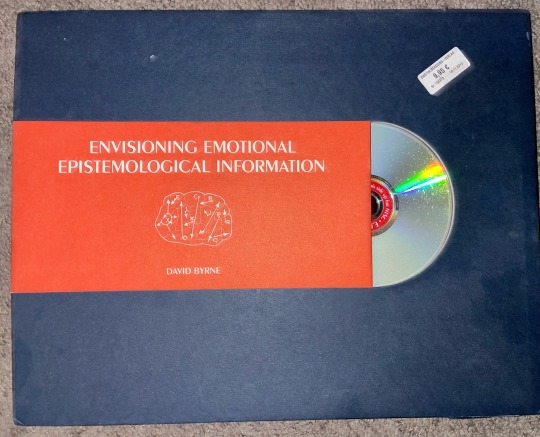
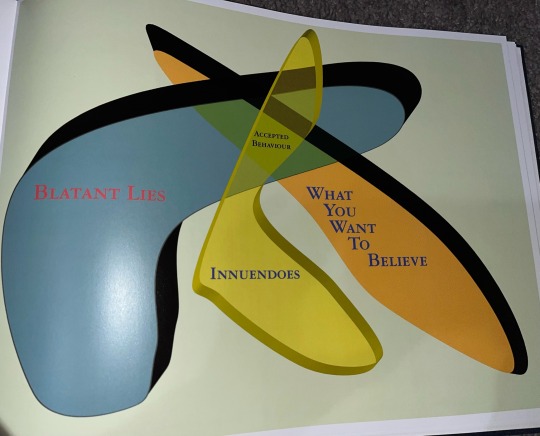


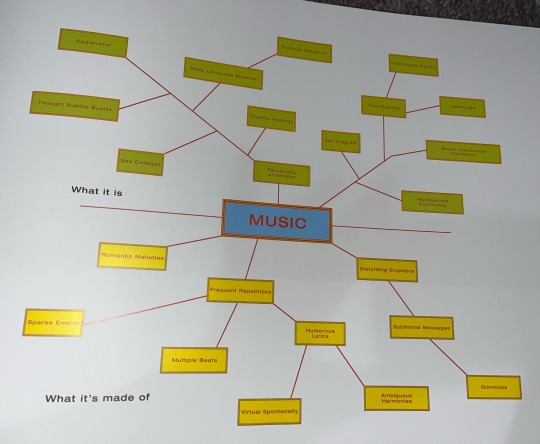




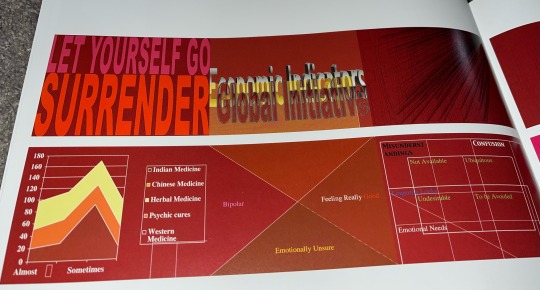

"Like The New York Times, CNN and network news programs, it [PowerPoint] appears to be neutral, unbiased and free of any leanings one way or another. Just as a hammer does not tell you what kind of house to build, Microsoft would like us to think...that their product is merely a neutral tool. It is faceless, and it is what you put into it that counts.
However, every piece of software comes with its own set of biases and tendencies. The most obvious bias and the easiest to see in PowerPoint, is the Auto Content Wizard, a feature that makes outlines of presentations with bullet points for those who feel they don't know how to make a presentation themselves...
However, there are more subtle sets of biases at work. The way the PowerPoint is structured and the various options provided have not only been limited...but they have been designed assuming, a priori, a specific world view. The software, by making certain directions and actions easier and more convenient than others, tells you how to think as it helps you accomplish your task. Not in an obvious way or in an obnoxious way or even in a scheming way. The biases are almost unintentional, they are so natural and well-integrated. It is possible that the engineers and designers have no intention of guiding and straightening out your thinking; they simply feel that the assumptions upon which they base their design decisions are the most natural and practical. You are thus subtly indoctrinated into a manner of being and behaving, assuming and acting, that grows on you as you use the program."
—David Byrne, "Exegesis," Envisioning Emotional Epistemological Information
#david byrne#EEEI#envisioning emotional epistemological information#powerpoint#powerpoint art#art#socialization#soft paternalism#paternalism#implicit bias#philosophy#practical reasoning#philosophy of action#moral psychology#framing effects#starting points#libertarian paternalism#choice architecture#Cass Sunstein#Richard Thaler#paternalism is unavoidable 🤷🏼♀️#this applies to AI too#ai#artificial intelligence#ethics#ethics of AI#bias#algorithmic bias#posting this because the caroline polachek late show performance of “dang” reminded me of this book#my library
35 notes
·
View notes
Text
Here is my version of Armaros/Arakiel!
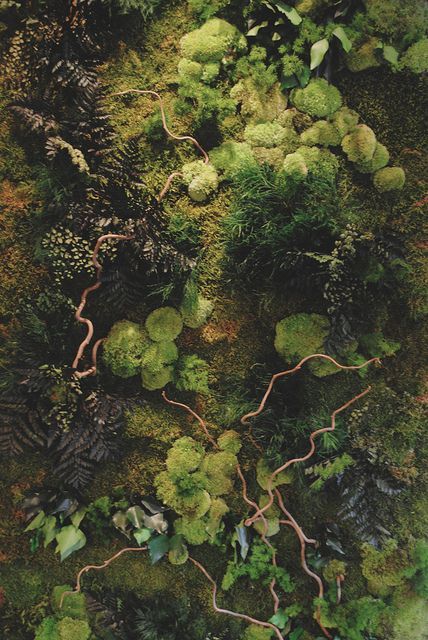


Aremophivus Brejzuktophina is an intuitive Äylcephomus with autism, having a difficult time reading social cues and body language. She has trouble with trying out new things and moving onto different activities as well as problems with organisation and planning. Her dependence is directed towards the support of parental figures and people she can trust like good friends. She has a morbid, self-destructive way of thinking and restless, agitated behaviour that makes concentration difficult. She needs some encouragement and hyperfixation every now and then by hugging her plushies or reading books on her special interests to a very concerning extent. At first glance, she’s quite emotionally sensitive in a violent way and appears to be cold, barely expressing her emotions. In actuality, she’s a tender and sweet person that tries her best to maintain a nonchalant attitude and an optimistic outlook on life. During intense and disorientating circumstances, she’s more likely to act on impulse, not considering the consequences of her actions. Other than that, Aremophivus has mediocre self-control and is relatively timid, treating most situations with hesitant caution.
As a curious individual, she finds comfort in exploring unfamiliar areas and acquiring knowledge, but stays on high alert for potential danger. Whenever she’s in a happier mood, she can be irresponsibly playful at times, pulling off harmless pranks and annoying tricks for the fun of it. She feels satisfied by her achievements and talents, trying not to outwardly boast about them. She can be aggressively self-assertive and veracious, but tries to remain respectful and humble in all situations. She’s firmly devoted to her relationships, constantly staying by the side of those she cares about through all highs and lows. Aremophivus will only leave someone behind if they betrayed her trust and/or had malicious intentions to use her for some unsavoury purpose. She can withstand adversity, but her extreme mood swings can make it difficult for her to adjust to certain life situations like accepting the death of a loved one. She isn’t afraid to resist politically corrupt individuals and people who abuse their position over others. Whenever she feels furious, she has an intimidating aura and no qualms in hurting the people who provoked her wrath. She has a strong hatred towards cruel and sadistic individuals as well as the feeling of unfair defeat.


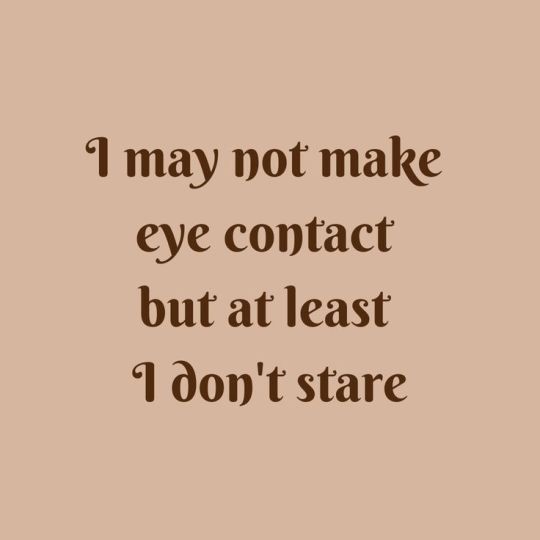
Her body type is a triangular ectomorph with slim arms, semi-sloping shoulders, a well-defined waist, large hips, and a flat chest. She has ashen skin with dark green freckles on her face, neck, and hands, and silvery pink stretch marks on her hips and upper arms. Her hip-length hair is a glimmering medium ash blonde with messy waves and middle-parted, ear-reaching bangs. She has eighteen male Himalayan monal wings and six-fingered hands tipped with slightly rounded claws. She also has two rows of omnivorous teeth and heterochromatic eyes—the right is a sunburst green-hazel and the left is teal. Her left foot has four digits with her big toe and second toe being infused together, her back is covered in scourging marks, and her hands and feet have healed holes. On her left lumbar region, there is a pinkish birthmark that appears to be strangely shaped like a gnarly tree stump.
Aremophivus is approximately 4’ 3” (129.54 cm) as a pre-teen, wearing a twinkling sapphire dress with a luxurious blend of rich velvet and flowing chiffon. The floor-touching sleeves have a dramatic bell shape that are snug at the shoulders, only to billow out past the elbows, and reminiscent of the wings of angels. They’re made from sparkling black chiffon, edged with delicate silver lace that mimics the intricate ironwork of Gothic cathedrals. The bodice is reminiscent of a gorget and cuirass, but with threads in gunmetal grey, muted gold, and deep scarlet weaving a pattern of zodiac constellations, nebulae, and vines. Around her waist, she dons a girdle of blackened chainmail, studded with sardonyx and metallic grey hematite, cinching her dress. Flowing from the cinched waist, the skirt unfurls like the petals of a rose, layers of earthy green translucent chiffon cascading over one another. The hem is hand-painted with a gradient that fades into a rusty brown and teal, which has flecks of burgundy. Aremophivus dons a waist-length half a circle cape in a muted brown, purple, and gold plaid pattern, a faded jade lining, and seven gilt-brass holly sprigs with ruby berries as clasps.
Aremophivus is about 6’ 5” (198.12 cm) as an adult, wearing a silk chiffon dress that appears to be basked in the golden glow of the setting sun. Her long sleeves slightly belled at the wrists, being made from a translucent gossamer fabric that has a gradient of strikemaster, ocean green, and apple blossom. The billowing sleeves are secured at intervals with gold-coloured bands of embroidered velvet. The bodice has a modest yet regal neckline with a gentle scoop that frames the collarbone, giving way to a dusting of fine and cobweb-like deep scarlet lace. It’s adorned with intricate patterns of slain dragons, guarding gryphons, wildflowers, and vines in silver-blue, gold, soft pink, wisteria, and metallic green embroidery. Purple pearls and small sapphire beads are sewn among the embroidery, catching the light and adding to the heavenly glow of the dress. Around her waist, she wears a belt crafted from woven silver threads with green gold filigree detailing, featuring a central rhomboid moonstone. Flowing from the waist is a skirt that cascades like a chiffon waterfall of liquid sapphire and the multiple layers of tulle creates both volume and a soft, cloud-like silhouette. The white tulle layers are subtly dusted with iridescent glitter, while the sapphire chiffon features appliqués of golden stars, scarlet sun crosses, and rusty brown alchemical earth symbols (🜃). The hem brushes the ground softly and trails behind with a gentle rustle, which is hand-painted with a shimmering green gold hue. Aremophivus wears a pair of dull copper rope sandals and a dragging saffron grey stole with green gold tassels and edge-embellished scarlet flames.
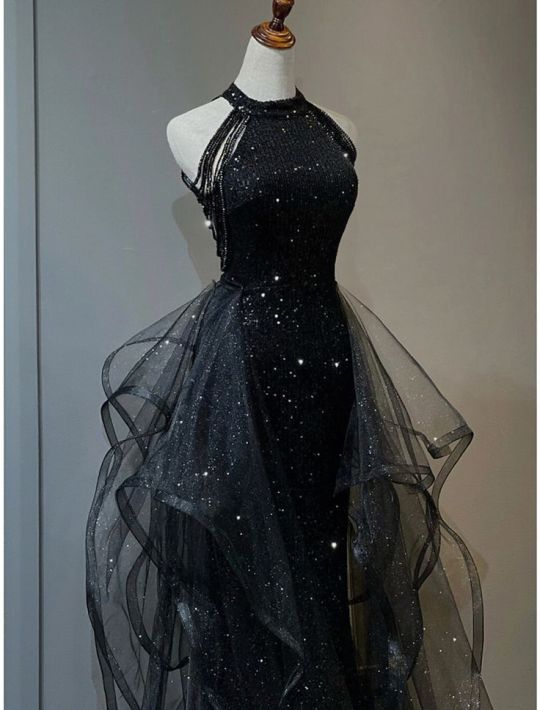
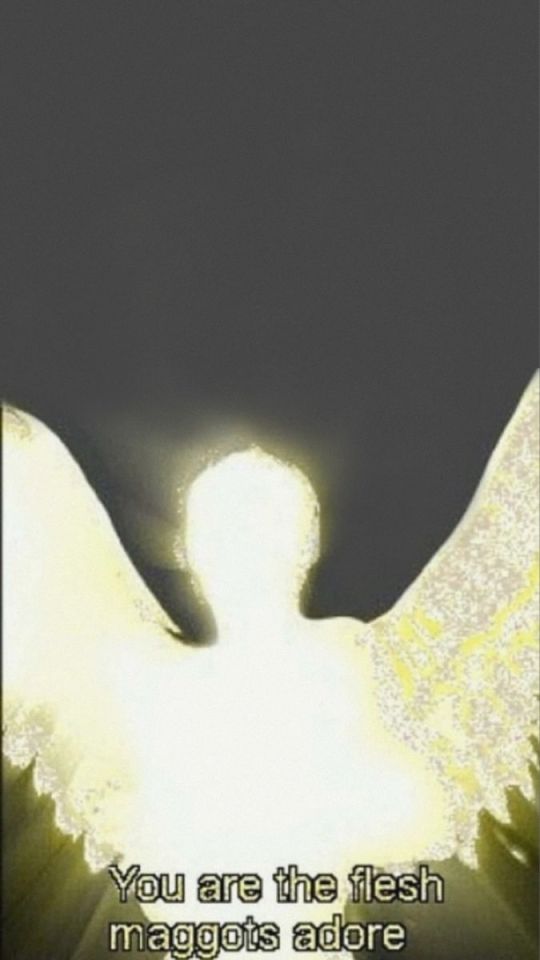

She can create an invisible dome of blinding light that can engulf twenty to thirty irredeemable sinners three times per week. This dome will send her chosen targets to a dimension that’s full of colourful life and gracious earth, completely alien from their world. However, once the earth has distorted and become hellish, her targets will begin to suffer horrific hallucinations. These hallucinations symbolise their past and heinous actions, proceeding to violently eviscerate their target until she pulls back the dome. She possesses a deep bond with nature, being able to understand and communicate with animals. Aremophivus has greatly heightened senses and the abnormal strength to move entire mountains. As a result of her agility and super quick reflexes, she’s capable of effortlessly evading capture and light-speed projectiles. She possesses unlimited knowledge of the earth’s physical phenomena and the resolving of enchantments. She’s able to unleash tremendous bursts of geokinetic power that can shake the very foundation of the earth. She can create miniature geological formations with a mere thought, and use empathy to heal the land, stabilise fault lines, calm natural disasters, and protect endangered species. She’s capable of communicating with the earth, restoring balance to ecosystems, and rectifying geological anomalies. However, she can cause immense damage to natural landscapes by utilising the negative energy of human neglect and greed.
She can manipulate incubation, imperfection, duality, balance, paradoxes, rampages, madness, rust, the reversal of time, decay, fiery and bloody explosions, daybreak, the rotation of all planets, gravity, leylines, and physical and spiritual boundaries. She can force people to view the goodness and wickedness of their souls, predict apocalyptic events and natural disasters, and bring down bolts of red lightning. She’s a master of alchemy that can speak and understand all languages, temporarily encase herself in a protective layer of holy light, and summon twelve wild animals. She can change the age and sturdiness of objects (e.g. carpet) and plants, influence good dreams, and procure temporal dignities. Aremophivus can absorb deteriorating health, sinful souls, pleasant memories, and internal organs, and endow forbidden secrets of the multiverse and hidden knowledge of music, logic, morals, and karmic laws. She’s able to influence romantic and sexual feelings between partners, and give death-inducing and life-giving properties to precious stones. In order to travel across the multiverse, she can use beautiful flowers, occupied and abandoned thrones, and boring rocks to teleport. She can grant beastly creatures dominion over mortals and create objects of authority that influence political power and competency (e.g. crown). She can curse mortals and unholy things by touching the centre of their form and reciting an ancient prayer of hate and vengeance.
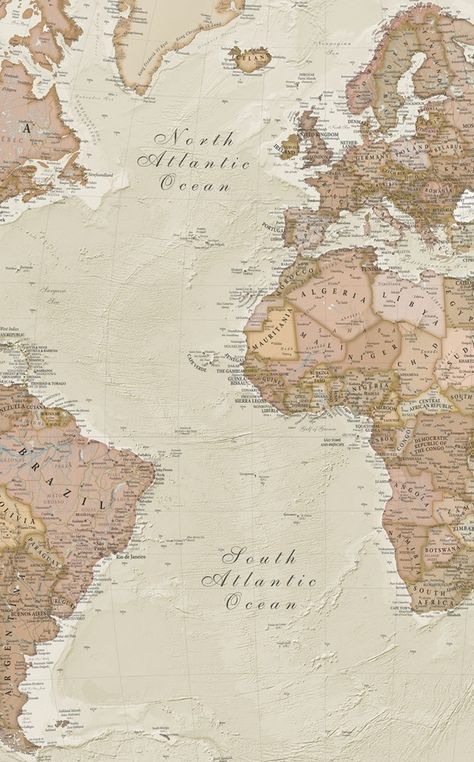


FAMILY:
Unnamed half-watcher half-seraph biological great-grandmother
Unnamed watcher biological great-grandmother
Unnamed biological grandfather
Unnamed princedom biological great-grandmother
Unnamed power biological great-grandfather
Unnamed half-princedom half-power biological grandmother
Unnamed ophanim biological grandfather
Unnamed earthly angel biological grandmother
Joluszeniah (biological father)
Zorsjahlen (biological younger half-sister)
Kasvedolun Zuraphomiel (biological mother)
Yomajuzhiel Galesoturvik (biological older brother)
Broghalenius L’Patenozudi-Gilebozrath (adoptive grandfather)
Lobaszewinth (adoptive grandmother)
Hirmenogaldus Zuntaheldi L’Patenozudi-Gilebozrath (adoptive mother)
Sedulomaith (adoptive sister)
Chaidozluben (adoptive brother)
ALIASES/NICKNAMES:
Armaros
Arakiel
Aretztikapha
Baphomet
Angel of the Distorted Earth, Rusty Throne and Undoing
Rest of the Mighty Land
FUN FACTS/EXTRA INFORMATION:
Her birthday is December 25th (Sagittarius)
She’s questioning her sexual identity as a pre-teen, but eventually decides that she's a libidoist asexual during early adulthood.
As an Æylphitus, the different parts of her name have special meanings: Aremophivus means “accursed one” and Brejzuktophina means “world of distortion”.
She’s 25% ophanim, 25% earthly angel, 18.75% watcher, 12.5% power, 12.5% princedom, and 6.25% seraph.
She’s the avatar of Povichulaszred, J’Tervazoschin, and Uylgabtoszerji.
Her special interests are plushies, geology, alchemy, and religious and moral philosophy. For plushies, her fascination with them goes beyond their softness and cuddliness; she sees them as companions that offer comfort and solace in times of distress. For geology, she likes to delve into the study of rocks and minerals, while uncovering the secrets of planetary crusts. For alchemy, she’s captivated by the idea of transformation through a magically scientific lens and the strange symbols used to mask such knowledge. For religious and moral philosophy, she likes to explore complex ethical questions and engage in philosophical debates.
She likes the feel of all earthy textures and soft breezes, solar and lunar eclipses, watching horrible people die painful deaths, viewing simple situations through a religious and/or morally philosophical lens, pretty dresses that are soft, and alchemical instruments.
She likes to ponder the mysteries of existence, morality, and the nature of the divine.
She dislikes people who prey on the vulnerable, rough and stiff dresses, different foods touching each other, ripped up, abandoned, and “life-like” plushies, being bossed around by total strangers, and trampled flowers.
She doesn’t care about dolls, but often feels disdain and discomfort when looking at them because they feel like a cheap mockery of human life.
Her hobbies consist of making elaborate flower crowns, enacting imaginary scenarios with her plushies, watching animals from a distance, and playing the ocarina. Due to owning a rock and gemstone collection, she always writes some information about and where she found each one in her journal.
Her favourite pastime is crafting intricate crystal structures that reflect the beauty of the natural world.
Her favourite animals are the chestnut-hooded laughingthrush, purple-stained daggerwing, Chinese water dragon, spotted lanternbug, European goldfinch, red fox, unicorn, and aspidochelone.
Her favourite flowers are the western underground orchid, chocolate cosmos, acolyte tears, tiger lily, jade vine, and marigold.
Her favourite comfort foods are rollmops, croissants with strained yogurt, baklava, sfiha, tayberries, clootie dumplings, marzipan cakes, and angel’s food with fresh pear slices and rice wafers.
Her three safe foods are hard-boiled eggs, cooked deer meat, and caramel shortbread.
Her favourite colours are Uranian blue, imperial purple, spring green, earthy red, harvest orange, soft gold, and copper.
Her biggest pet peeves are being told to “speak up” when talking, chaotic messes, the sight of bees, wasps, and hornets, lack of privacy, yelling, nail noises (e.g. cutting), sleeping in beds that have unfamiliar fabric textures, having to eat foods that feel slimy and/or plastic-y, exposed stomachs, and overreactions.
She fears being misunderstood and manipulated, being abandoned by parental figures, unpleasant change, not meeting expectations, and public embarrassment. She’s also afraid of not reaching her full potential, becoming a burden for others, and being overwhelmed by her own emotions.
She has a profound capacity for empathy, stunning pattern recognition, and an exceptional memory.
She’s secretly a lover of solitude, preferring to interact with people who share similar interests or show her unconditional love and respect.
In order to regulate herself internally, she covers her ears, twirls her hair, flaps her hands, and moves her fingers vigorously.
Whenever she’s confused or curious, she instinctively tilts her head to the left.
She owns a wide array plushies, which includes the following: a clay golem that has the main planetary symbols on its back, a blue-and-purple serpent with a green gold eyeball for a head, a white-and-red foxhound with a silver unicorn horn, a two-headed black cat with lavender eyes, five kittens, a brownish-grey bunny that wears a dark purple nightgown, eleven bunnies, a sleepy cream-coloured lop rabbit, a pearlescent white dragon with icy blue wings, a copper axolotl with emerald button eyes, a lion-headed tortoise, a human-headed golden calf, a falcon holding a fiery disk in its beak, a four-headed leopard with rooster wings, and a polar bear with three ribs in its mouth.
She has plushies that represent different geological formations and alchemical symbols, which she uses to explain complex concepts to mortals in a way that’s both cuddly and enlightening.
She owns a taxidermied rat king in a fitting glass box
She has a rusty teal leather traveller’s backpack that holds her plushies, journal, a self-replenishing big pouch of gold, silver, and bronze coins, alchemical, geological, and philosophical books, rock and gemstone collection, and taxidermied rat king.
She smells like lavender, grapefruit, and cedarwood.
Once she reached adulthood, she was given the responsibility to watch for warnings of the last judgement.
She’s a guardian of harmony between opposing forces (e.g. human and animal) and a gatekeeper of hidden knowledge and forbidden secrets.
She creates maps of Earth’s hidden structures, revealing secrets of the planet’s ancient multiversal history and hidden energies.
As an adult, she eventually earns a library of ancient texts in the Sun of The Wise, which aren’t accessible to everyone as she’s very selective about who she shares her wisdom with.
As a pre-teen, her guilty pleasure is sneaking into any castle’s armoury to admire and handle weapons, especially if they're considered too dangerous for her to wield. As an adult, her guilty pleasure is collecting rare texts that are explicitly forbidden from most universes and dimensions, especially ancient spellbooks and heretical writings.



#writerscorner#creative writing#writing#autism#original character#personality#physical appearance#outfit#abilities#power#angel#ophanim#earth angel#watcher#principality#seraph#distortion#world#earth#nature#curse#throne#sovereignty#rust#plushies#geology#alchemy#philosophy#fun facts#extra information
8 notes
·
View notes
Text
Progressing from reading AO3 fics to racy JSTOR articles to Hegel's Master-Slave Dialectic, call it the humanities student pipeline
#jk I've read it twice now for uni and I regret to inform you that the text itself is profoundly unsexy#hegel#philosophy#philosophy memes#georg wilhelm friedrich hegel#master slave dialectic#ao3 memes#fanfic meme#jstor#shitposting#humanities#academia memes#philosophy shitpost#idealism#ao3#fanfic
13 notes
·
View notes
